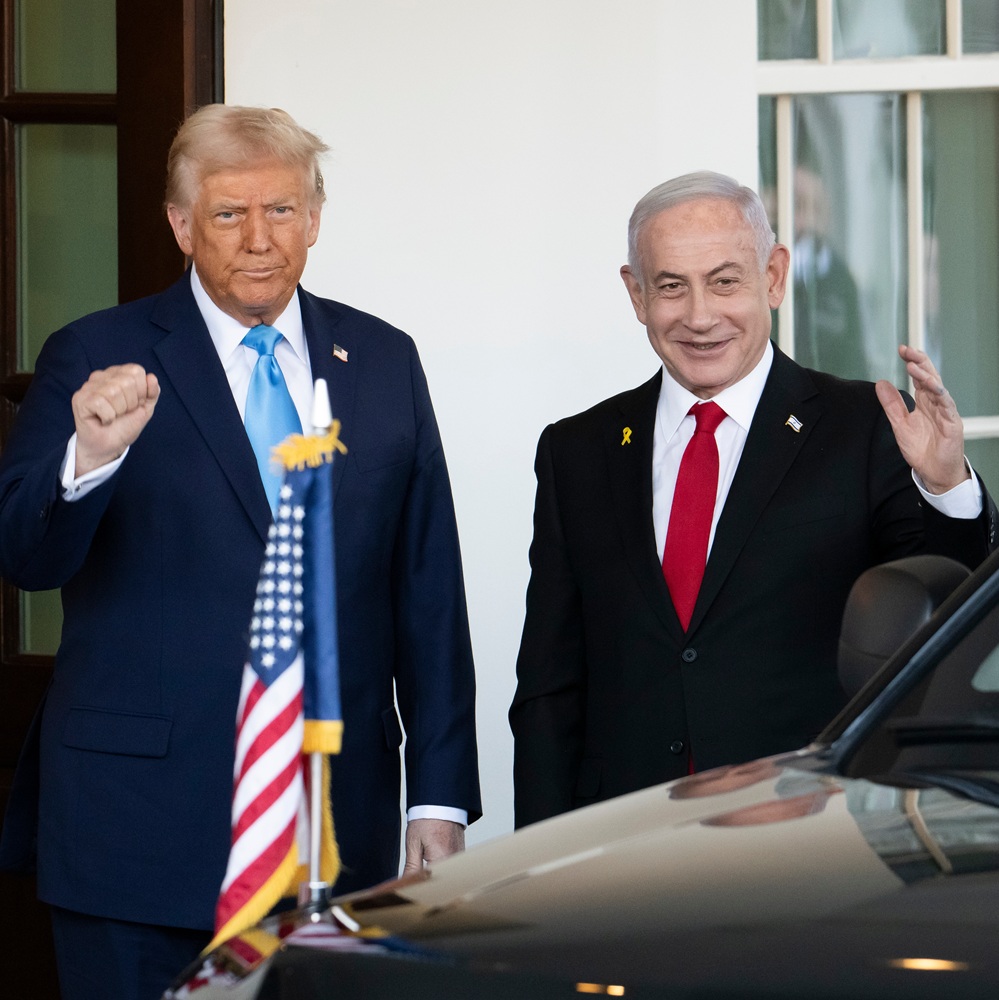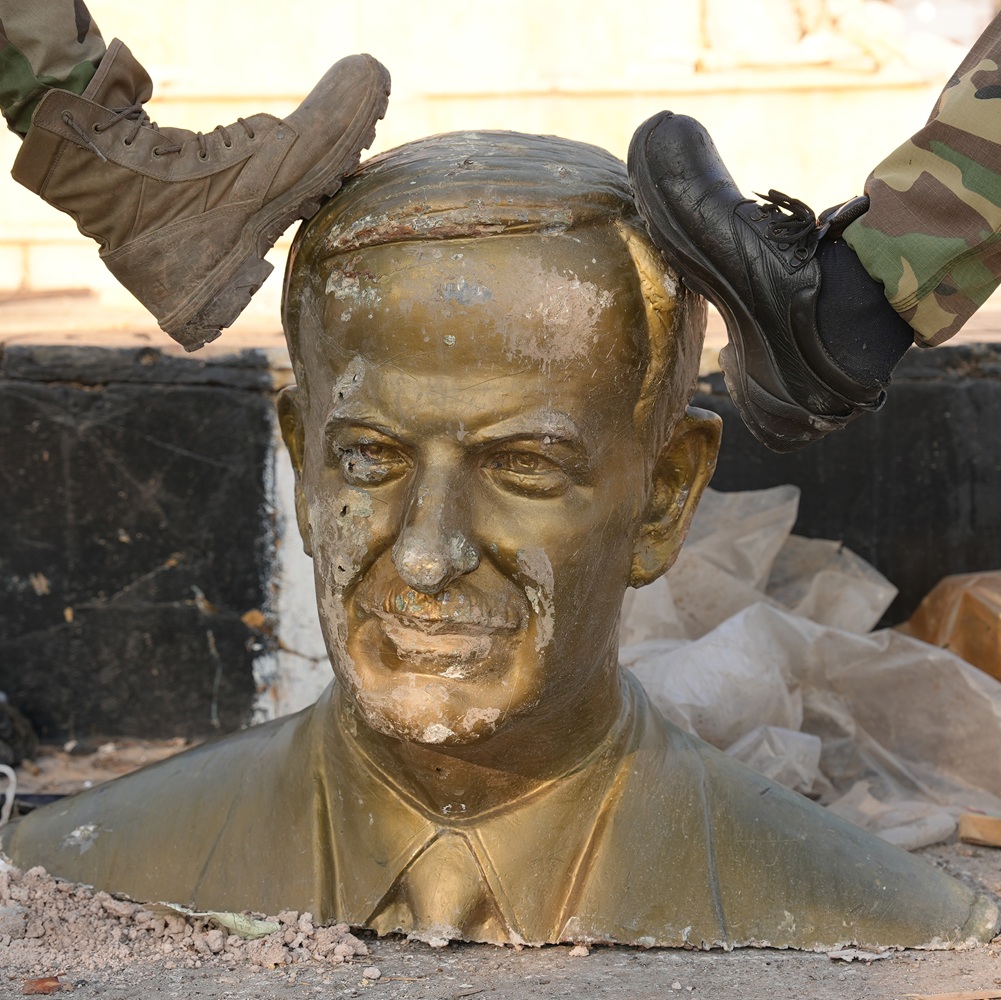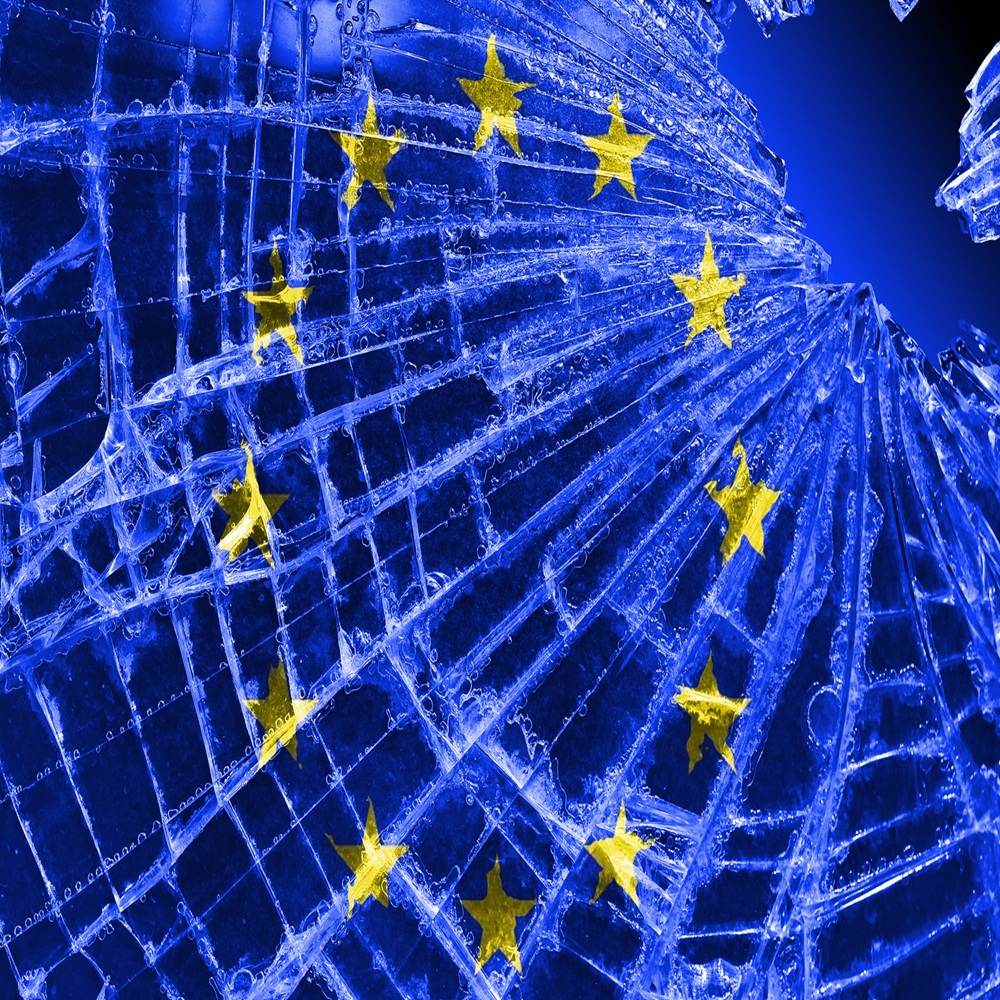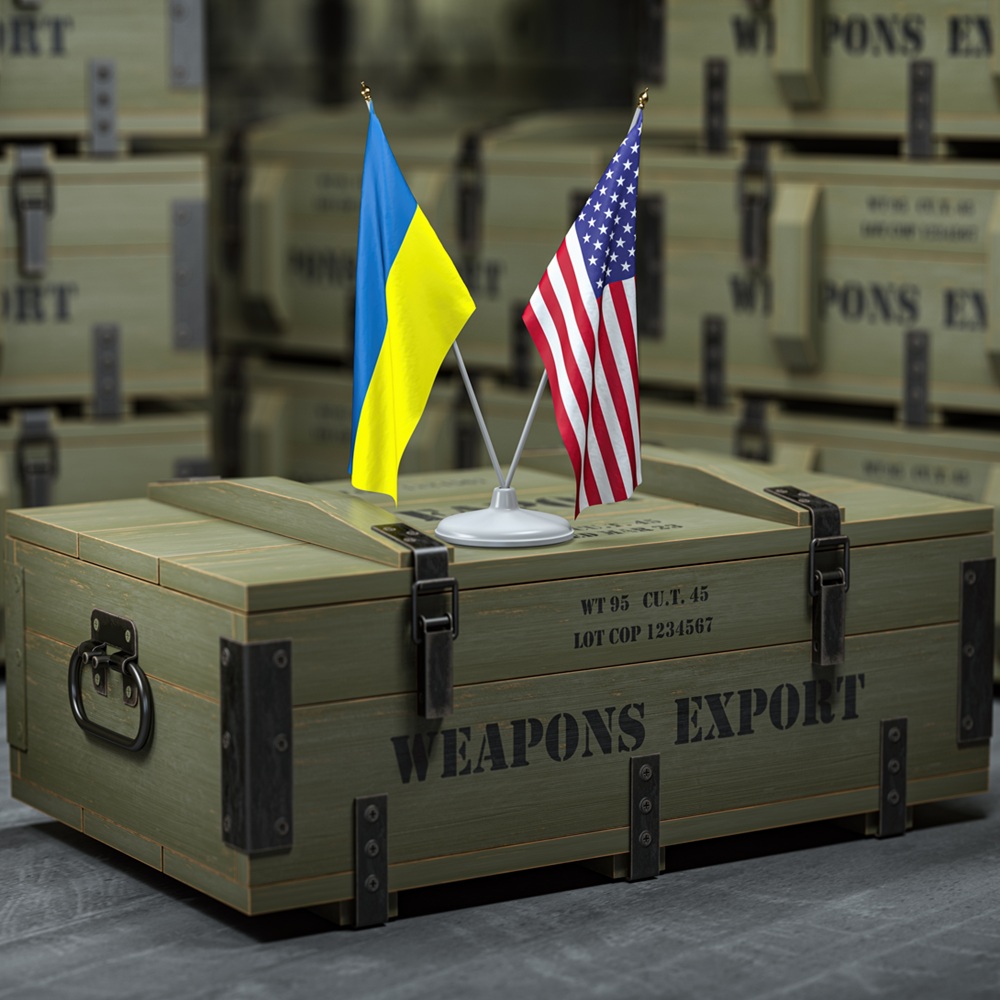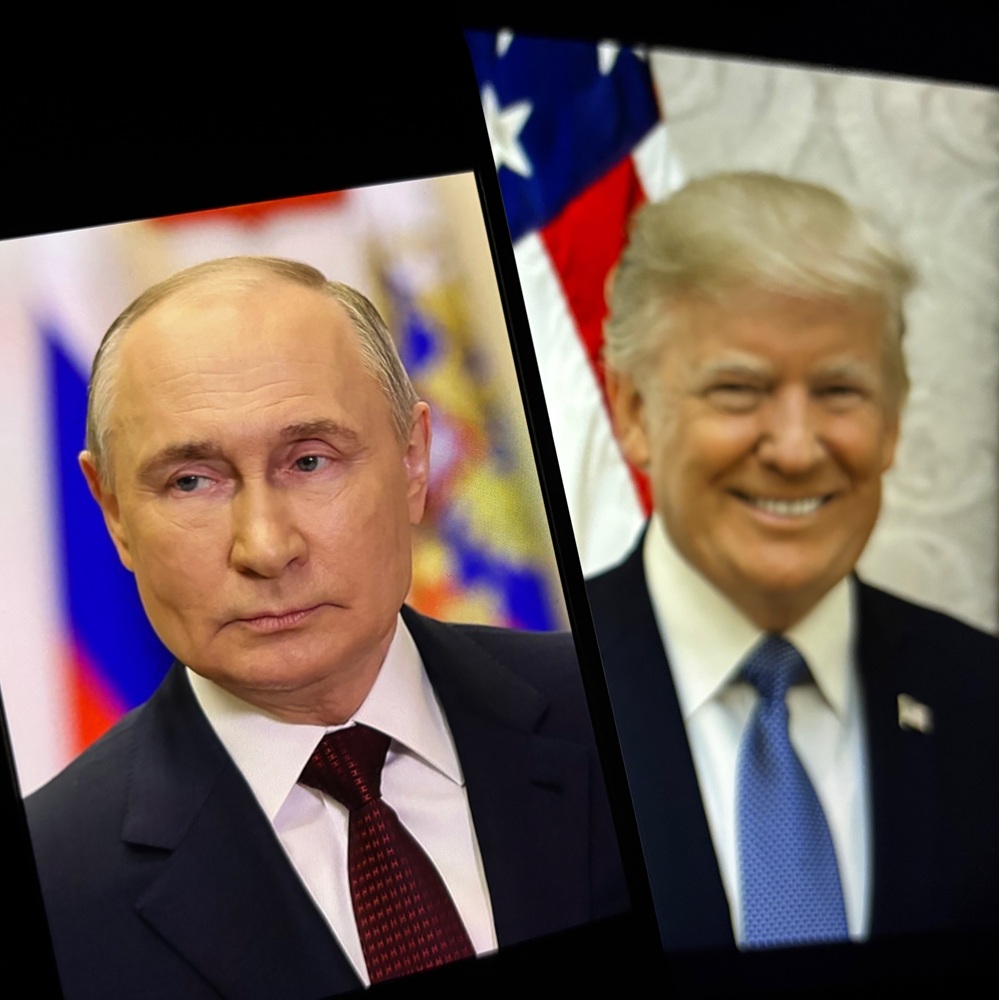Hezbollah in the new reality — dying or a black swan?
by Oleg Rustamov
한국어로 읽기
Leer en español
In Deutsch lesen
Gap
اقرأ بالعربية
Lire en français
Читать на русском
A series of rapid domestic political changes in Lebanon has disrupted the established balance of power, creating a foundation for a reassessment of the positions of key players. Amid a pause in regional escalation, the debate on the decline of Hezbollah’s influence — long the dominant military and political force in the country, has become a topic in numerous publications. However, there is no consensus on the group's future: some experts predict its complete disappearance, while others, on the contrary, believe that the current conditions will serve as a catalyst for its restructuring. A sober view of what Hezbollah represents today seems more important than ever. Since the election of Joseph Aoun as President of Lebanon and the subsequent appointment of Nawaf Salam as Prime Minister, Lebanese politics has continued to undergo changes that are shaping its new landscape. The intensification of diplomatic contacts, escalating tensions in the border region, and unexpected administrative decisions — all these factors reflect the search for a renewed equilibrium that aligns with contemporary realities. Weakened by war and political shifts, Hezbollah finds itself at the center of these transformational processes. Hezbollah's Pyrrhic Victory With the end of active military operations in November 2024, the question arose regarding the extent of the damage suffered by the Shiite group. Despite all the statements by the organization's Secretary-General, Sheikh Naim Qassem, about a "great victory" over the Zionist enemy, the pathos of his rhetoric is significantly devalued when confronted with the stark reality. In fact, the transition of Hezbollah’s current leader to this position from his long-held role as Deputy Secretary-General — a position he occupied for over 30 years under Sheikh Hassan Nasrallah — is directly linked to a key consequence of the war: significant losses within the organization’s ranks. One of the most devastating blows to the group was the physical elimination of the majority of its leadership. Since Hezbollah’s involvement in supporting Hamas's "Al-Aqsa Flood" operation, key figures within the organization have been consistently targeted and killed. Among them were prominent Radwan Unit commander Wissam Tawil, the heads of the Nasr and Aziz special units Talib Abdallah and Mohammed Nasser, as well as the overseer of Hezbollah’s rocket program and chief military advisor to the Secretary-General, Fuad Shukr. Additionally, Ibrahim Aqil, a member of the Jihad Council, Hezbollah’s main military body, was also eliminated. The most shocking event, however, was the death of Hezbollah's longtime leader, Sheikh Hassan Nasrallah, following an Israeli strike on Dahiyeh, the southern suburb of Beirut. The attack also claimed the lives of another Jihad Council member, Ali Karaki, and General Abbas Nilforoushan, a commander of Iran’s Quds Force. Hezbollah supporters would likely have reacted with even greater dismay to the elimination of Hashem Safi al-Din, the head of the group's Executive Council [1]. This is because the Shura Council, Hezbollah's main administrative body, is required to elect two Secretary-Generals every three years — one acting and the other "reserve". This procedure was established in the 1990s after the assassination of Hezbollah’s second leader, Abbas Musawi, to prevent internal discord and confusion in the event of a sudden elimination of the Secretary-General. Hashem Safi al-Din was precisely such a designated successor, yet due to his untimely death, he never had the opportunity to enact this contingency mechanism. The losses suffered by the Shiite group, of course, were not limited to its senior command. Before the launch of Israel’s Operation Northern Arrows, the number of Hezbollah casualties among rank-and-file members was estimated at around 400–500 fighters. However, by the end of the Third Lebanon War, Arab and Israeli sources reported that this number had risen to 3,000–4,000, accounting for approximately 6–8% of the organization's 50,000-strong force (as estimated by the U.S. Congress). This figure does not even include a significant number of non-fatal combat casualties — those wounded and rendered incapable of further service. It is also important to note that the number of casualties continues to rise even after the ceasefire agreement came into effect, as Israel’s interpretation of the agreement grants it "full military freedom of action" against Hezbollah. The Israeli military continues to carry out air and missile strikes on any targets suspected of harboring Hezbollah members or being linked to the group. By the end of December 2024, the number of ceasefire violations had already exceeded 300 cases. The "Blue Helmets" (the United Nations Interim Force in Lebanon, UNIFIL) peacekeeping mission in Lebanon has expressed concern over Israel’s actions. Another crucial aspect of Hezbollah’s post-war situation is the state of its missile arsenal, which posed the primary threat to Israel. As of March 2024, the group was estimated to possess between 100,000 and 200,000 missiles, the majority of which were short-range rockets. According to U.S. and Israeli assessments, Hezbollah’s remaining arsenal now constitutes between 20% and 50% of its pre-war stockpile. However, independent analysts tend to agree only with the upper limit of this estimate. Thus, it becomes almost indisputable that the events of the Third Lebanon War have dealt a significant blow to Hezbollah. The hopes of its supporters for a swift and miraculous recovery are unlikely to materialize. Given the deteriorating geopolitical environment and growing internal pressure on Hezbollah within Lebanon, it remains unclear where the organization will find the resources for its restoration. At the same time, it would be premature to write off the Shiite group entirely. Even Israeli media acknowledge this, publishing bold headlines stating that Hezbollah has not been defeated. The most valuable asset of any political organization is its people, and in this regard, Hezbollah still holds strong advantages. Among objective Lebanese analysts, there is a consensus that support for Hezbollah within the Shiite community remains consistently high. Some even argue that its position has strengthened. Faced with widespread dissatisfaction with the group outside its sectarian base and increasing external pressure on Lebanon, Shiites fear becoming scapegoats. The fear of collective punishment is pushing them to rally around their traditional leadership, as they recognize that they are all in the same boat. Today, the ball is in Hezbollah’s court. The group must act with the utmost responsibility and precision to justify the trust of its supporters. A key focus of this strategy will be its cooperation with the new government, where Hezbollah and its allies, notably, still hold a significant position. The New Cabinet: Remembering Siniora or Bring Back My 2005 On Saturday, February 8, Lebanese Prime Minister Nawaf Salam announced the completion of the formation of a new national government, calling it a "government of reform and salvation". The process took 26 days, which, for the country's political history in the 21st century, is almost a record. The only time a cabinet was formed faster was in 2005, when Prime Minister Fouad Siniora assembled his government in 19 days amid nationwide mobilization following the Cedar Revolution [2]. This rapid pace is, in fact, a testament to the critical state of Lebanon, whose governmental and bureaucratic system only begins to "wheeze into action" when it is just steps away from plunging into the abyss. The cabinet has been deliberately composed of 24 figures who are formally unaffiliated with political parties [3] and do not intend to participate in future elections. According to the prime minister's vision, this approach is meant to reduce political friction within the government and ensure its effective functioning. Instead of engaging in Lebanon’s traditional positional party politics, ministers are expected to focus solely on their respective portfolios. However, the consultation process between the prime minister and political forces somewhat dilutes the effectiveness of this strategy. Powerful parties still have a significant influence over appointments due to the requirement for parliamentary approval of the cabinet. Nevertheless, the composition of the new government has been strongly influenced by the personal vision of reform-minded President Joseph Aoun and Prime Minister Nawaf Salam — an unusual situation for Lebanon. Ten ministerial candidates were directly nominated by this top-level tandem, while another twelve were backed by political forces [4]. Despite widespread predictions of doom, the Hezbollah-Amal duo — often referred to as the "Shiite duo" — secured four trusted representatives in the government, two from each organization. Another Shiite quota, assigned to the Minister of State for Administrative Development, became a compromise between the Prime Minister and Speaker Nabih Berri, the leader of Amal. However, in the final assessment, this was still framed as a "non-partisan" appointment made on behalf of the head of government. Thus, the configuration of Shiite ministers in the new cabinet clearly demonstrated the practical inevitability of Hezbollah and Amal’s continued influence. The political weight of the "Shiite duo" simply did not allow the Prime Minister to significantly limit their representation in the highest executive body, even though it seems that Nawaf Salam himself is at least somewhat interested in weakening Hezbollah and Amal’s positions. Furthermore, Amal managed to retain its long-standing monopoly over the Ministry of Finance, which was given to former MP Yassine Jaber, a member of the movement. This appointment was preceded by intense speculation, as the Finance Minister holds the second most powerful position in government after the Prime Minister. Any governmental decision that requires budgetary allocations must be signed off by the Finance Minister, meaning that the lack of approval could effectively block any government initiative. Although Jaber was quick to assure that he would not abuse his position, it is clear that President Aoun and Prime Minister Salam, who are oriented toward the West and the Gulf monarchies, are unlikely to be pleased that a key tool for obstructing government operations remains in the hands of figures close to pro-Iranian Hezbollah. At the same time, it appears that in exchange for this “veto” power, another mechanism of obstruction for the Shiite duo has been neutralized — the current cabinet includes a Shiite minister who is not directly dependent on the will of Hezbollah and Amal. This means that if the four representatives of the duo decide to withdraw from the government in an attempt to delegitimize it, the Minister of State for Administrative Development, Fadi Makki, will remain in office. As a result, the argument about the lack of Shiite representation — and therefore the alleged illegitimacy of the cabinet — would become irrelevant. This move by the country’s leadership was not merely a symbolic concession — it is rooted in historical precedents. During the tenure of Fouad Siniora’s government (2005–2009), Hezbollah and Amal effectively withdrew [5] all five Shiite ministers from the cabinet, arguing that the government had become unrepresentative due to the absence of Shiite figures. At that time, Hezbollah and its allies demanded the formation of a national unity government in which the opposition — meaning themselves — would hold a so-called "blocking third". Government decisions in Lebanon require a two-thirds majority, meaning that a political force controlling at least one-third of the cabinet plus one minister has the power to veto decisions and, if necessary, bring down the government. The crisis peaked in 2008, leading to violent clashes between Hezbollah and pro-government forces, which resulted in over 100 casualties. The conflict was eventually resolved, but it remains a cautionary precedent in Lebanese politics. Since then, and until the formation of the current cabinet, every Lebanese government has had one political alliance that held the coveted "blocking third", effectively giving it the ability to stall the cabinet's work. This dynamic is precisely why Lebanon has experienced four governmental crises since 2009. Against this backdrop, Nawaf Salam’s decision to eliminate this risk in the new cabinet appears prudent, as it significantly reduces the chances of yet another executive power collapse. Meanwhile, the Minister of Finance remains a trump card in the hands of Nabih Berri, a highly skilled political tactician. It will only be played if the stakes become too high and the current political arrangement starts leading toward defeat. The Shiite duo is not in a position to oppose the government without cause, but it still has the leverage to defend its core interests when necessary. At the same time, the Shiite duo’s main domestic political opponents — the Lebanese Forces (LF) and Kataeb Party — secured a total of five ministerial portfolios. Additionally, two seats in the government went to candidates from the traditionally Druze Progressive Socialist Party (PSP), which has a long history of political maneuvering in pursuit of the best outcome for its community. Its de facto leader, Walid Jumblatt, has alternated between criticizing Hezbollah and aligning with it, depending on the political climate. Another ministerial position was assigned to Noura Bayrakdarian, a representative of the Lebanese branch of the Armenian Revolutionary Federation (ARF) "Dashnaktsutyun". The Dashnaks have long been junior partners in the March 8 Alliance [6] and have maintained close ties with the Christian Free Patriotic Movement (FPM). Notably, for the first time in two decades, the FPM failed to secure a single cabinet appointment — a situation last seen during Fouad Siniora’s government. A particularly symbolic shift occurred with the Ministry of Energy, a traditional stronghold of the FPM, which was handed over to the Lebanese Forces (LF). The decoupling of the Free Patriotic Movement (FPM) from Hezbollah, which we previously discussed, largely predetermined the Shiite bloc’s isolation in the new government — this is the first time they are in the cabinet without a strong Christian ally (the Marada Movement has also been left "overboard"). Following the cabinet’s approval, FPM leader Gebran Bassil expressed willingness to work constructively in opposition, yet at the same time, he voiced serious dissatisfaction with the Prime Minister’s actions. According to Bassil, Nawaf Salam granted greater influence over the cabinet’s composition to Shiite and Druze forces, at the expense of Christian and Sunni interests. His discontent over FPM’s exclusion from the government was further evident during the parliamentary confidence vote. During the session, Gebran Bassil accused the Prime Minister of reneging on commitments made during consultations over his appointment. As a result, the FPM faction refused to support a vote of confidence in Nawaf Salam’s government, stating that the Prime Minister "did not deserve it". However, the parliamentary confidence vote left Gebran Bassil and his Strong Lebanon bloc in the minority. The ministerial statement delivered by the Prime Minister focused on the same priorities outlined in President Joseph Aoun’s inaugural speech: restoring the rule of law and sovereignty, reforming institutions, and committing to the implementation of UN Resolution 1701. The declaration contained at least two clear warning signals directed at Hezbollah. Nawaf Salam reaffirmed the government’s stance that only the state should have the authority to decide on matters of war and peace and hold a monopoly on the use of weapons. Regarding judicial independence, the declaration stressed the urgent need to shield the judiciary from interference and pressure, particularly in relation to the investigation of the Beirut port explosion. This was an explicit reference to the fact that the "Shiite duo" has been obstructing the work of Judge Tarek Bitar, who, in the course of his investigation, attempted to summon high-ranking members of the Amal Movement for questioning. In his speech, Mohammed Raad, the leader of Hezbollah’s Loyalty to the Resistance parliamentary bloc, while offering a few policy recommendations, refrained from harsh criticism of the government and expressed the faction’s trust in it. Other MPs' speeches reflected cautious optimism toward the government's agenda, frequently emphasizing that their support was conditional and could only be justified by concrete steps toward promised reforms. Common ground for the speeches were calls to resolve the problems of depositors and the entire banking sector, to conduct electoral reform and future elections on time, and to economically revitalize depressed areas. The two most popular appeals turned out to be issues that opposing forces usually raise on their banners - the need to put an end to the Israeli occupation and to hand over all weapons to the state. Ultimately, 95 MPs voted to vote in confidence in the cabinet, 12 voted against it and 4 abstained from voting. Overall, the new Lebanese government appears to be, at the very least, an extremely interesting and therefore promising structure. Attention is drawn both to the stylistic aspects – the high representation of women and people with an academic background – and to the formal ones – the absence of a blocking third and the large number of ministers appointed by a tandem of senior officials. All this creates the impression of a very balanced and well-composed cabinet, which is likely to be largely capable of coping with the ambitious tasks of restructuring the country. At the same time, the cabinet in its current form will exist only until the parliamentary elections in May 2026, when the updated balance of power will be established. In this regard, the little over a year that the cabinet has seems to be a period that is insufficient to achieve all the goals set, but suitable for starting the flywheel of change. And despite the fact that Hezbollah and the new Lebanese leadership, represented by the president and prime minister, do not find understanding on all issues, there is something that unites them - to put it mildly, a cool attitude towards Israel. However, on this front, as it turns out, everything is not going as smoothly as we would like. Retreating "Israeli-Style": The IDF Bids Farewell, But Doesn’t Quite Leave… The ceasefire agreement between Hezbollah and Israel officially expired on February 18, by which time the Israel Defense Forces (IDF) were expected to fully withdraw from Lebanese territory. However, few anticipated that the process would proceed without surprises, given reports of Israel’s interest in extending the agreement once again. Indeed, just one day before the deadline, Israeli military officials announced that, as a temporary measure, the army would maintain its presence on five strategic heights. The United States, as the leading party in the ceasefire monitoring committee established by the agreement, was quick to support this move. Meanwhile, Lebanon’s entire political leadership — including the President, Prime Minister, and Speaker of Parliament — continues to insist on the complete withdrawal of Israeli forces. Israel's strategy in the Lebanese direction remains in the logic of tough and uncompromising suppression of security threats. In reality, the "delay" of Israeli troops and the continuation of strikes devalue the entire meaning of the established agreements, giving one of the parties a "legal" opportunity to violate them. In turn, in response, the Israelis insist that Hezbollah is violating its obligations to care for the Litani River. Some experts suggest that the five strongholds in southern Lebanon will become objects of long-term occupation. Control over the hilly terrain along the perimeter of the Israeli border deep in Lebanese territory should obviously create a certain buffer zone, which in theory will secure the borders of the Jewish state. However, if the IDF does not plan to linger on Lebanese soil, it is not very clear until what point its military presence is necessary. In accordance with the agreements, this territory is taken under control by units of the Lebanese Armed Forces, which do not pose any threat to Israel. Moreover, the sincerity of statements about the temporary nature of such measures also calls into question the fact that the land component of the cross-border tensions between Hezbollah and Israel has never been the main cause for concern. The main threat has always come from the missile potential of the Shiite group. In his recent statement, Hezbollah Secretary General Sheikh Naim Qassem predictably demanded a complete withdrawal of Israeli troops from Lebanese territory after October 18 and called on the government to pursue this without compromise. At the same time, he did not disclose what specific actions would be otherwise, but noted that “everyone knows how to deal with occupation.” The restrained tone of his remarks (albeit against the backdrop of the usual anti-Israeli rhetoric) and the lack of any particular threats in the words of the organization’s leader in the language of Hezbollah can be considered cautious statements. Without a doubt, the group at this stage does not have the resources to actively oppose Israel: deliberately going into confrontation today is the same as throwing a slingshot at a tank. Moreover, escalation puts at risk the predominantly Shiite population of southern Lebanon, which is a key component of the organization’s supporters and has already become refugees. The Waning Influence of Hezbollah In addition to the challenges of de-occupation of Lebanese territory, both domestic and foreign policy developments in recent months have been marked by other significant events. All of them point to a certain reconfiguration of Lebanon’s political landscape — one that, more often than not, appears to be unfavorable for Hezbollah. The expected shift is taking place in the system of foreign relations - preconditions for strengthening American-Saudi influence are emerging, namely, the name of the recently elected president of the country was associated with the protection of Washington and Riyadh. Thus, it is this alliance (but, above all, the Saudis) that has for many years acted as a counterweight to Iranian influence on Lebanon, the main conductor of which is Hezbollah. In January, the Minister of Foreign Affairs of Saudi Arabia, Prince Faisal bin Farhan Al Saud, visited Beirut for the first time in 15 years. He expressed support for the president and the prime minister in their course for reform. A few weeks later, the example of her Saudi colleague was followed by the deputy special representative of the US president for the Middle East, Morgan Orgatus. However, her visit caused much more noise: from indignation over a ring in the form of the Star of David at a meeting with the Lebanese president to an audience with an ally of Hezbollah, the speaker Nabih Berri, who during the conversation called Israel "absolute evil". It is curious that the American envoy's visit took place on the eve of the announcement of the cabinet composition. In this regard, her statements that «Hezbollah should not be part of this government in any form» did not go unnoticed, especially after the list of ministers was made public. Another big event was the announcement that Lebanon had a “future” again. Saad Hariri, the longtime leader of the Mustaqbal (Arabic for “future”) movement and former prime minister, announced his return to politics after a three-year hiatus on the twentieth anniversary of the assassination of his father, also Prime Minister Rafik Hariri. Before the 2022 parliamentary elections, he announced that he would not participate in them and effectively dissolved his movement. This step left the Sunni forces fragmented (and therefore weak), and the Sunni part of Lebanese politics was left without a clear leader at the helm. This happened because Mustaqbal had long dominated this segment of society, and now Saad Hariri found the best opportunity to make a political comeback. His return to politics can also be seen as an additional factor in the growth of Saudi influence, since he himself is a native of Riyadh and a subject of the kingdom. His ties to the Al Saud family, which go back to his father, have never been a secret, but after the incident in 2017 [7], the relationship has been going through hard times. He also has certain connections to the Emirati elite, in particular to Sheikh Tahnoun bin Zayed Al Nahyan. Finally, the most important news of recent weeks is the government-initiated ban on Iranian civilian aircraft landing in Lebanon, and in particular at Beirut's Rafik Hariri International Airport. After one of the Iranian airliners was denied landing, Hezbollah supporters began protests and blocked the road to the only international airport in the country. The government's extension of this measure, first until February 18, and now indefinitely, is due to information published by the IDF that Iran is sending funds to Hezbollah via aircraft. In his statement following the events, Hezbollah Secretary General Sheikh Naim Qassem did not vigorously attack the country's leadership, noting that the decision was made under the threat of an Israeli «strike on the runway» if the Iranian plane landed. At the same time, he criticized the government's position, which assumes compliance with Israeli orders. This development once again demonstrates the waning power of Hezbollah and reveals how tense the situation is in Lebanon. *** The recent public funeral of Sheikh Hassan Nasrallah, as a symbol of the end of an era, involuntarily becomes the leitmotif of complex internal Lebanese processes. The flight of Israeli fighters over the funeral procession of many thousands and the absence of the president and prime minister, despite the invitation, make comments unnecessary. At present, in the words of the funeral speech of Secretary General Sheikh Naim Qassem, the time has come for “state responsibility” — Hezbollah is deliberately giving way to the proscenium (but not leaving), realizing the sensitivity of the moment and its own difficulties. And although today it seems that the new reality has already been formed, it is important not to lose sight of the fact that this transition is still far from complete. Most likely, a somewhat predictable situation (if this is applicable to Lebanon at all) will be achieved only after the parliamentary elections in 2026. The path to them in the next year or so will be no less important, but electoral cycles often tend to present surprises. For now, Hezbollah's chosen line of minimizing conflict and a reasonable, but sometimes unyielding, conversation with the new government seems balanced. Three aspects will be key factors at this time that can determine Hezbollah's future. First, the degree of consolidation of the Shiite population around the organization. The extent to which the leadership manages its resources in relation to people is the extent to which the group will remain firmly on its feet. As after the Second Lebanon War, Hezbollah (through its institutions such as Jihad al-Binaa [8]) is engaged in the reconstruction of housing in the affected areas and the payment of targeted compensation (rent). However, this campaign is already facing financial difficulties, despite the tens of millions of dollars spent, since the organization relies almost exclusively on Iran. In this and other dimensions, Tehran's position in the medium term is also critical. Second, the topic of Hezbollah's disarmament will acquire particular importance in the foreseeable future. This problem has already been outlined by the country's top leadership on several occasions, and has also been mentioned in the government's declaration to parliament and supported by a considerable number of deputies in their speeches thereafter. It is becoming clear that such statements are not a bluff, they are for the benefit of Lebanon's international image, but it is not yet at all obvious how this process can be set in motion without clashes within the country. The requisition of weapons from Hezbollah will mean a radical change in the ontological foundations of the group's existence. Strictly speaking, it will no longer be Hezbollah, but something else. The last defining aspect, certainly related to everything outlined earlier, is Israel's behavior. Its escalation will catalyze two mutually directed processes - the government will increasingly put pressure on Hezbollah with the goal of pacifying it or even disarming it, while the group itself will be less and less willing to do so. At the same time, the scenario in which the Israelis manage to completely defeat Hezbollah seems as unrealistic as the idea that Israel will soon abandon its assertive (if not aggressive) policy of suppressing security threats. In this regard, the development of the situation in the Washington-Tehran-Tel Aviv triangle will, for obvious reasons, continue to be relevant for Lebanon and Hezbollah. It is still too early to see Hezbollah as a dying swan. At this stage, the organization stands at a crossroads, where the choice of path carries significant consequences. Only time will tell whether the new leadership can make the right decisions, rebuild the organization's structure, and improve its internal Lebanese relations. The current state of international politics, with its unexpected twists and sudden outcomes, suggests that Hezbollah should rather be viewed as a black swan. 1. The Executive Council is one of the five main bodies of Hezbollah, responsible for the non-military and non-political development of the group (education, social support, medical care, media support, etc.). 2. The Cedar Revolution is a series of popular protests after the assassination of Prime Minister Rafik Hariri in February 2005, centered around the Syrian military presence in Lebanon (both condemning and supporting it). As a result of the protests, Syrian troops were withdrawn from the country after 30 years on Lebanese soil. 3. According to the Lebanese newspaper L’Orient-Le Jour, the Minister of Youth and Sports Nura Bayrakdaryan is an active member of the Armenian Dashnaktsutyun party, however, according to the prime minister’s inaugural statements, the cabinet does not have any ministers who are party members. 4. There are 24 ministers in the government, including the prime minister and deputy prime minister, respectively, the remaining 22 ministers are responsible for their respective areas. 5. The ministers stopped participating in the government's work and submitted their resignations, which, however, were not accepted by the prime minister. 6. The pro-Syrian (and/or pro-Iranian) parliamentary bloc that emerged as a result of the Cedar Revolution of 2005 was formed on the basis of three major political forces: Hezbollah, Amal and the Free Patriotic Movement, as well as their junior partners. 7. In November 2017, while serving as the prime minister of Lebanon, Saad Hariri was effectively detained in Saudi Arabia. He then went on television to announce his resignation and condemn Hezbollah and Iranian influence in the country. The situation was later resolved and the prime minister was released. 8. Jihad al-Binaa is an organization within Hezbollah that is involved in the construction of infrastructure and the construction (reconstruction) of buildings.










